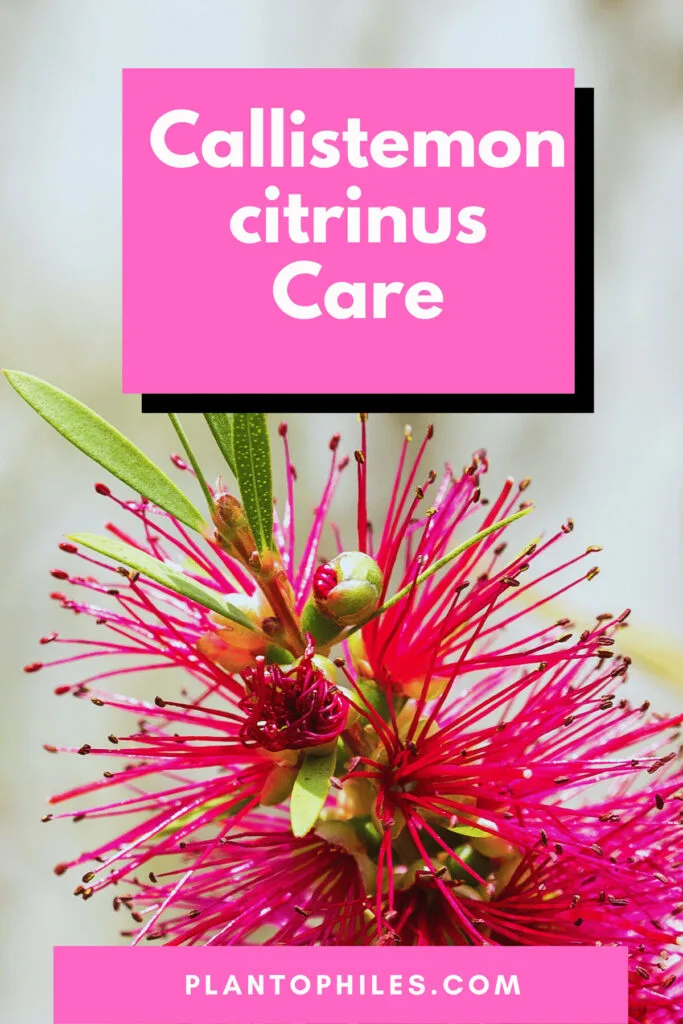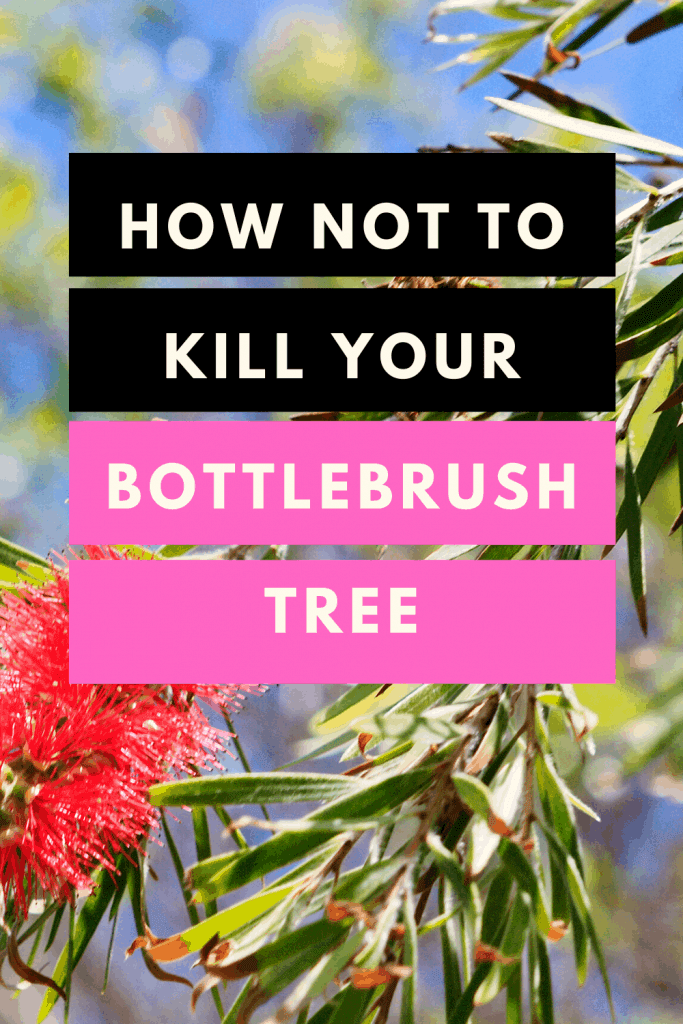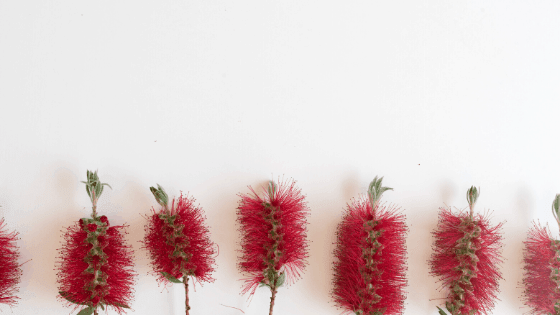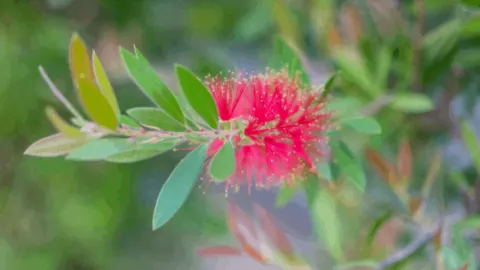You are reading this article to learn about Callistemon citrinus care and planting.
Callistemon citrinus Little John Care Takeaways
| Species | Callistemon citrinus |
|---|---|
| Synonyms | Bottlebrush,Crimson Bottlebrush,Lemon Bottlebrush |
| Family | Myrtaceae |
| Genus | Callistemon |
| Growth | Upright, Spreading |
| Height | 10.0ft / 3.0m |
| Width | 8.0ft / 2.4m |
| Soil | Well-draining soil mix |
| Watering | 7.0 – 14.0 |
| Light | Full sun |
| Temperature | 50.0 – 90.0°F / 10.0 – 32.2°C |
| Humidity | 40.0 – 60.0% |
| Fertilizer | Once a month |
| Propogation | Stem cuttings or seeds |
| Toxicity | Non-toxic |

Bottlebrush Tree
Bottlebrush tree or Callistemon citrinus (Latin name) is an evergreen shrub named for the spikes of the flowers that grow at the end of the branches, with a close resemblance to a bottle brush.
The bottlebrush tree is a summer plant native to Australia. It blooms throughout summer with cylindrical-shaped flower spikes 2.4-4 inches long (6 to 10 cm) and 1.6-2.8 inches in diameter (4 to 7 cm).
They can tolerate humidity and be grown as shrubs or trees that can get 15 feet tall (4.6 m). Mbottlebrush varieties bloom with red and crimson flowers.

The bottlebrush tree fills your garden with a delicious, lemony citrus smell.
It is an exotic plant with bright, fluffy flowers that attract hummingbirds, butterflies, bees, and other wildlife.
It is an adaptable plant that can be planted anywhere on your lawn, against a wall or fence, and even in large pots to add a decorative touch and serve as a centerpiece.
Table of Contents

Bottlebrush Tree Care
Soil
The main soil requirement for a bottlebrush tree is good drainage.
Any soil will work well for a bottlebrush tree, but it loves soil with a pH between 5.5 and 7. If the soil is poor quality, add compost for nutrients to amend it before planting.
Prepare the fertile soil with peat and sand to improve the drainage. Preparing the soil beforehand loosens it, making spreading the roots much easier.
The ideal soil allows roots to easily permeate and remain damp, not wet. Avoid soggy soil or areas where water can gather.

Temperature
As a native Australian plant, the bottlebrush prefers warm temperatures.
Bottlebrush requires a very mild climate for growth. The ideal temperature for growth is 50°F – 90°F (10°C to 32°C).
If you live in a harsh climate area, you can plant them in pots to protect them in harsh conditions. If you are planting a bottlebrush indoors, maintain a room temperature of 15 degrees Celsius.
Location
Bottlebrush trees are sun-lovers, so they require full sun to thrive.
Grow them in a sunny spot; the plant needs plenty of sunlight to produce beautiful red flowers.
For planting a bottlebrush directly in the ground, choose a place where the plant receives at least six hours of sun daily.
A south-facing position ensures the bottlebrush tree gets adequate sunlight throughout the year.
Check the neighboring plants to make sure you don’t plant the bottlebrush in a crowded area or where plants might grow more extensively, leading to blocking the sunlight.
Bottlebrush trees growing in containers also need to be positioned in a sunny spot and can be easily moved around to encourage plant growth and blooming.
Consider planting it indoors in a container if you live in cold areas. Once the plant is established, you can transplant it to the outdoor garden.

Planting Bottlebrush Trees
The bottlebrush tree is an excellent garden plant. If you want to transplant your indoor bottlebrush tree, dig a hole based on the size of the plant roots.
The hole should be double the size of the roots in width and at least 1.5 times depth to provide good air circulation. Tease the roots of the plant slightly and place it in the hole.
When planting in groups, leave at least two feet of spacing between each plant.
Growing and caring for the bottlebrush is simple and easy. Once developed, a bottlebrush can tolerate drought and harsh conditions. But you must take care of your plant for healthy growth and blooming.
Watering
Moderately water this tropical plant when it is young. Plants two or more years older are more drought-resistant than young plants.
Laying mulch on the soil will facilitate water retention and prevent weeds.
Use a 2-inch (5 cm.) layer of shredded hardwood or bark or a 3- to 4-inch (8-10 cm.) layer of light mulch such as pine straw, hay, or shredded leaves.
Like any other garden plant, do not overwater the bottlebrush to prevent root rot.
Without rainfall, water the plant every week during the growing season. Water the plant daily during the first week after planting; water slowly to ensure the water is absorbed deeply in the soil to develop a robust root system.
If you are growing your plant in a container, take special care to avoid overwatering, as the water drainage is less in the container compared to the ground soil.
You can add builders sand to the soil mix in the container to improve the drainage.
Frequently inspect the top 4 inches of the soil; if the soil is slightly damp, the plant is well-watered, and if it is dry and powdery, your bottlebrush tree needs water.
Fertilizer
The Bottlebrush tree should be fertilized for the first time with 2-inch (5 cm) compost in their second spring after planting. During warm months, feed the plant with low-phosphorus fertilizer every month.
It will help the bottlebrush tree grow plenty of flowers throughout the season. Phosphorus-based fertilizer helps in flower development.
If your plant struggles with blooming despite all the care and watering, you might be using the wrong fertilizer.
You can use a general-purpose fertilizer to encourage blooming for the bottlebrush tree or even an organic fertilizer such as compost or manure.
Use a granular fertilizer for the plant growing in the soil outdoors, while a liquid fertilizer is recommended for plants in containers.
The bottlebrush tree is prone to fertilizer burns, causing leaf discoloration.
Therefore, use the amount indicated in the instructions, or if unsure, use less than required.
Applied at the start of the spring, summer, and fall, an 8-8-8 or 10-10-10 slow-release fertilizer will enable steady growth and flowering.
Add fertilizer once a year until the plant is fully grown.
This plant does not grow in cold months; avoid fertilizing during those months as the extra nutrients are not required.
Read our full plant nutrients and fertilizer guide here.

Callistemon citrinus Propagation
If you intend to propagate the bottlebrush tree, you can do this with seeds or stem cuttings.
Propagate the bottlebrush tree with seeds
- Locate the fruits growing along the flower stems in clusters to collect bottlebrush seeds.
- Carefully remove the fruit from the plant and store it in a cool, dry paper bag.
- When the fruits open, you can collect the tiny seeds and sow them in moist soil during spring.
After the seedlings appear, transfer them to bigger pots for growth and continue the usual bottlebrush care.
Propagate the bottlebrush tree with stem cuttings
Propagation by stem cuttings is done in summer.
- Cut the stems from semi-mature wood using sterilized pruners. Remove leaves or flower buds from the cuttings and dip them in a rooting hormone powder.
- Now, place the cuttings in a growing medium(perlite, potting soil, or other starters).
- Ensure the medium is damp by covering the cutting with a plastic bag to retain moisture. When the roots appear after 9 to 10 weeks, remove the plastic bag and replant the bottlebrush tree outdoors.

Little John Pruning
For most plants, pruning diverts the plant’s energy into flower production.
Pruning is necessary for the excellent health of the plant. Knowing how and when to prune is essential for bottlebrush tree care.
The bottlebrush tree needs light pruning to keep it under control.
The time of the year you choose to prune the bottlebrush tree will directly impact the growth and blooming; continuous pruning leads to a lack of flowers in the preceding year.
You should remove the inner branches if damaged or diseased, whereas thin them lightly if the interior growth is turning brown due to lack of sunlight. It will ensure proper sunlight is reaching the inner branches of the plant.
- You should prune the bottlebrush when the flowers fade to avoid damaging the future blooms.
- Keep the pruning minimal by clipping a few inches(5cm) below the tips.
- If you are pruning the plant to maintain size and shape, prune each stem individually by cutting branches just above a node.
The simple rule is that pruning for size or shape should be done in early spring, whereas pruning for health and maintenance should be done twice a year, both in early spring and late summer.
Pest And diseases
bottlebrush tree is cherished for its bright flowers and evergreen foliage.
Like other garden plants, a bottlebrush is also prone to certain diseases and pests.
Some of the diseases are easily treatable, while others are severe diseases that are difficult or sometimes impossible to treat.
Knowing the symptoms and treatments is necessary for disease prevention and plant care. The following are the most common diseases and pests of bottlebrush trees:
Twig Gall
Twig gall is a fungal disease caused by excessive watering. Overly wet soil and foliage lead to new twigs growth on the tree, and the branches bloat.
You must cut the unhealthy twigs growing on the bottlebrush tree and dispose of them. You also need to alter watering habits to avoid excessively moist soil.
Water the plants only when necessary, and consider adding sand to help drainage.
Powdery Mildew
This bottlebrush disease is also caused by water on the foliage.
If you notice white or grey covering anywhere on the plants, it most probably indicates powdery mildew. In some cases, it can turn the leaves brown or yellow.
You can spray the plant with fungicide or neem oil to treat powdery mildew. You can also consider watering the plant from below instead of the top to prevent this disease in the future.
Avoid planting the bottlebrush in dark or damp corners, and water the plants in the morning so the leaves can dry throughout the day.
Root Rot
Fungus and overwatering the soil causes root rot. You will notice the tree is dying; the trunk is turning odd colors. The leaves are yellowing and falling.
The root rot fungus can attack the neighboring plants as well.
Make sure the soil is well-drained to prevent overly moist soil. Apply the fungicides to treat root rot. Gardeners recommend proper care to avoid this disease, as curing is difficult.
The best protection against root rot is prevention by controlling the water given to the plant.
Read our extensive root rot causes and symptoms guide, as well as our article on how to treat root rot.

Verticillium Wilt
It is caused by the fungus living in the soil. The prominent symptoms of this disease are yellowing flowers and dying branches.
Verticillium wilt does not kill the bottlebrush tree, but removing this fungus from the soil is difficult.
This disease is difficult to identify as the symptoms are similar to other pests and diseases.
Cut the stem, and if you notice any dark circles on the cross-section, your bottlebrush tree suffers from verticillium wilt. Treat the plant with fungicides and replant the tree in another location.
Leaf Spot
This fungal disease affects the beauty and appearance of the tree.
It spreads due to soggy or overly sweet soil. Premature defoliation and spots on the leaves are the prominent symptoms of leaf blotch or spotting.
The spots are brown with a yellowish border and increase in size over time. To prevent the fungus from reattacking, burn the infected leaves and spray the tree with liquid copper fungicide.
Cankers
This is also a fungal disease that spreads rapidly and affects the growth of the bottlebrush tree. It is caused by improper fertilization and wet soil.
The tree becomes disfigured and lifeless, and the branches become uneven with swollen areas. Proper fertilization and fungicide sprays can protect the bottlebrush tree from this deadly disease.
Sawfly Larvae
It causes skeletonization of leaves and defoliation. These larvae are removed by using neem oil or a strong azadirachtin spray. You can even dust the plant with diatomaceous earth.
Scale Insects
They are hard to spot and cause pale trails on the bottlebrush leaves. You can scrape the insects off the leaves or use pressurized water sprays to remove them. For massive infections, you have to use neem oil or other powerful sprays.
Web Moth
Web moths or webbing caterpillars are the most damaging pest for bottlebrush trees. They attack young leaves by webbing them together to form cocoons.
If you notice any cocoons or sawdust on the branches or leaves, immediately remove and dispose of them. You can also use carbaryl insecticide, which has proven to be very effective against web moth larvae.
Inspect your bottlebrush tree regularly for diseases and pests.
In addition to the diseases and pests, the bottlebrush is also affected by severe climatic conditions.
Harsh winter conditions affect the bottlebrush as they can cause leaf browning, but if the stems are not dead, your bottlebrush tree can recover.
Wrap the bottlebrush tree with plastic or burlap to keep it warm in harsh, cold weather.
Ensure proper air circulation on the top and underside of the plant to avoid any diseases due to prolonged dampness.

FAQ
Why is my bottlebrush tree not blooming?
Bottlebrush tree grows bright red flowers to beautify and brighten up your garden. But if the flowers are not blooming, you probably do something wrong while caring for your plant. Consider the following:
- Sunshine: Bottlebrush thrives in full sun. Make sure your plant gets sunlight for at least 6 hours. The neighboring plants can also block the sunshine. You can cut the nearby shrubs or replant them in a new position to ensure proper sunlight.
- Fertilizer: Nitrogen fertilizer causes foliage but sometimes reduces the growth of flowers or fruits. If you are using nitrogen fertilizer, read and follow the plant label and fertilizer instructions carefully.
- Pruning: It encourages blooming and keeps the plant in shape, but it might have the opposite effect if you prune the bottlebrush at the wrong time. When loaded with buds, pruning the plant will reduce the number of flowers and can even lead to no blooming. The best time to prune your bottlebrush is right after flowering in late spring and summer.
Why are the leaves of bottlebrush drying?
There could be several causes for drying or dead leaves. Most of the time the plant is still treatable; consider the following reasons for drying leaves:
- Wind and extreme cold can damage the leaf, causing them to dry, turn brown, or dieback. Plant the bottlebrush in an area with wind protection else the wind will cause extreme dryness and the water to evaporate quickly. The bottle brush is damaged when the temperature drops below -6 degrees Celcius. In this case, remove the damaged leaves by pruning the stems.
- Iron deficiency causes the bottlebrush leaves to turn yellow and restricts the growth leading to dry and dead leaves. Iron deficiency is caused by compacted and improper watering. Applying iron chelate to nearby soil will solve this problem.
- Armoured scale, a bottlebrush pest can also cause dry, dead leaves. They feed on the sap in the leaves and stem. For a small infection, prune the infested branches. For severe infections, place sticky traps on affected branches and spray the leaves with ready-to-use horticultural oil spray. Inspect the plant and continue the treatment for ten days to completely get rid of the pests.
How often should I water the bottlebrush tree?
You should water the bottlebrush tree every day during the first week after planting. Water the plant slowly so that the roots are thoroughly saturated. Later on, reduce the watering to two or three times a week. Eventually, stop regular watering and water the plant only when the soil feels dry.
How to protect my bottlebrush tree against tree suckers?
Plant or tree suckers are an effort by the plant to grow more branches. It is preferable to prevent tree suckers than to remove them.
You can control tree suckers by keeping the plant in good health; avoid additional stress on the plant caused by drought, overwatering, diseases, or pests.
Regularly prune the bottlebrush, but avoid over-pruning as it can stimulate tree suckers.
If you notice any tree suckers, remove them immediately, as they will divert the energy from healthier branches. Use a clean pair of pruning shears and cut the sucker close to the tree. Leave the collar to help with recovery.
Conclusion
Callistemon citrinus is a flowering perennial desert shrub that can be grown in various sizes and shapes. This ornamental plant requires minimum maintenance; it is a perfect choice to be grown as a shrub in your home garden or a small tree to decorate your entryway or patio.
Once the bottle brush tree is fully grown, it does not require special attention and is easy to care for.
With lots of sun and a little fertilizer, the bottle brush plant will reward you by adding vibrant color and texture to your home garden.

Daniel has been a plant enthusiast for over 20 years. He owns hundreds of houseplants and prepares for the chili growing seasons yearly with great anticipation. His favorite plants are plant species in the Araceae family, such as Monstera, Philodendron, and Anthurium. He also loves gardening and is growing hot peppers, tomatoes, and many more vegetables.


